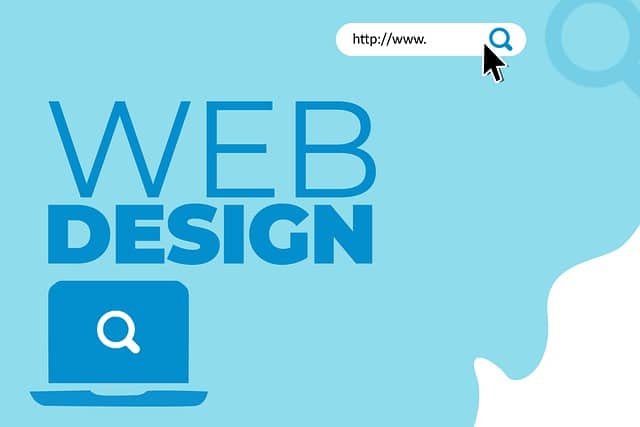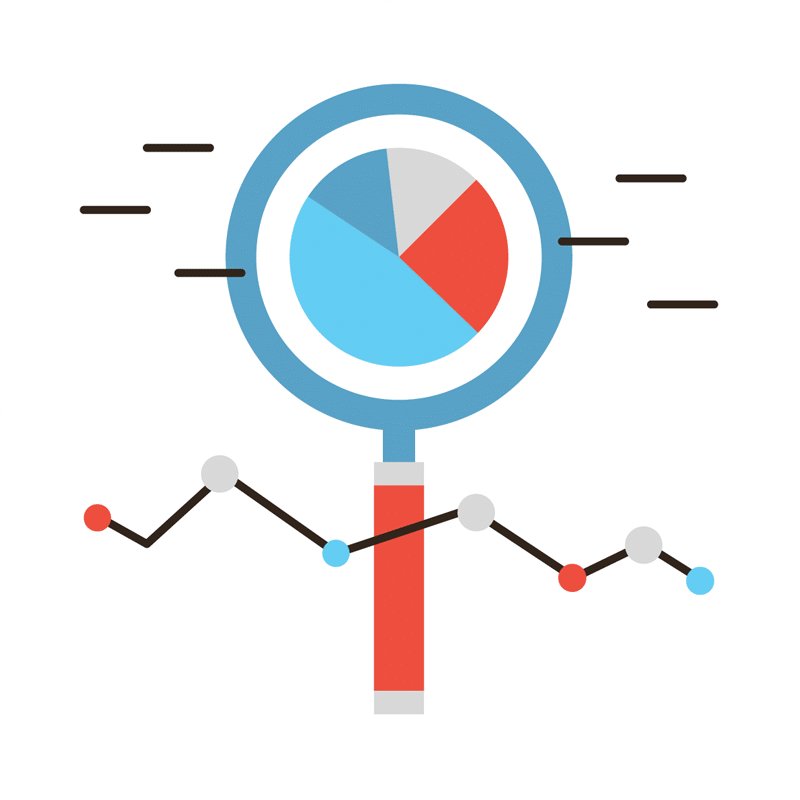
Website design is about more than just coordinating colors or picking out fonts. It’s about how your business presents itself to the world through your website. It’s your virtual storefront, and a prospect’s first impression of your business. In addition, the design of your site is a catalyst on how you create your brand, convert visitors to customers, and retain the loyalty of your clients.
Does that seem like a lot for web design to achieve? Well, with a thoughtful design, this is all possible. In this week’s blog, we’ll talk about how you can design a website that’s efficient and represents your business in the best possible light for prospects and customers.
Six Elements That Contribute to Good Website Design
1. Your Digital Marketing Strategy
Effective website design starts with a smart and strategic digital marketing plan. What is the goal of your overall digital marketing strategy – to bring in visitors and readers, to make online sales, or to generate leads? Narrowing this first goal down to the essentials will help you design a website that achieves those goals.
Why is this step so critical? Because if you dive right into designing a website without a concrete goal in mind, you may very well miss your mark.
For example, you can charge ahead and create a website that leads visitors right to your blog posts. If your goal is to attract lots of readers through a content-marketing strategy, that’s great. But if your goal is to get those website visitors to make a purchase, and your site lacks a clear call-to-action, you won’t see results. That’s why you need to start with a clear goal in mind that fits into your larger digital marketing strategy.
2. Customer-Centric Design
It’s common for business owners to think about their websites as a showcase for their products or services. And that is partly the purpose of good website design – to serve as a welcome mat for your customers and prospects.
But if you only focus on showing how wonderful your company is, you will miss out on what your customers really want – how your product or service will improve their lives. What’s in it for them? Good website design will show them.
Here are just a few examples. Instead of:
- endless pictures of just your product, chose images that show how your products delight your customers.
- a long list of every feature of your service, use a design that walks prospects through the journey of using your service – how easy it is to order, and how much value they’ll gain from it.
- focusing on lots of testimonials that tell visitors how great your products are, use just 3 testimonials on your home page that tell them how your product made their life better.
3. Consistent and Coherent Branding
Good website design doesn’t just look attractive. It tells the story of your brand and strengthens every visitor’s awareness of your brand. Your digital presence across all platforms should be coherent and consistent.
That means you should have a set of brand colors you use on your business website, your social media platforms, in your email marketing, and everywhere else online. You should take care to use the same font, similar design elements, and the same writing tone. And you should have a set of easy-to-reference guidelines you and your web development team, if you have one, can reference as needed to keep everything consistent.
Why is this so critical? After all, it’s not like most casual browsers of your website will notice if your Instagram looks a little different than your homepage. But while they may not notice consciously, our brains are quick to subconsciously pick up on these subtle differences. And creating that strong brand makes it easier for your company to stick in the mind of your prospects and customers.
4. Ecommerce Essentials
It’s challenging to be an ecommerce site these days – but it’s too lucrative a market for most businesses to skip.
Why is it so challenging? Customers in today’s age aren’t just comparing the experience of shopping on your website to your competitors in your industry. They’re comparing your shopping experience to sites like Amazon and other tech giants.
That means there’s no room to have a poorly-designed ecommerce site. You can’t have a glitchy order system, a confusing layout of your product pages, or other common issues. Your potential customers will get frustrated and abandon their shopping carts very quickly if they can’t find and order what they need.
What does that mean for your web design? A few principles to keep in mind:
- Your homepage and landing pages should have a clear call-to-action. Tell your visitors exactly what you want them to do, and make it easy to do it with the push of a button.
- Product pages in your online store should be descriptive and easy to navigate. Longer descriptions boost your SEO (search engine optimization), and give your customers the information they need up front to decide about making a purchase.
- Design every element of your website to be user-friendly, and make sure your design elements look good whether your visitor is viewing them on a desktop computer or a mobile device.
- Use contrasting colors and good graphic design to lead your visitors through your website to make a purchase (learn more about using web design to enhance marketing).
5. Optimize for Search Engine Traffic
SEO isn’t just important when you’re writing a blog post. It’s also a critical part of your website design. Without the right design elements, you will struggle to attract traffic from search engine users.
What are the key elements of web design for SEO? Here are just a few:
- Ensure each web page’s title is tagged as an H1 header, and write clear, descriptive titles for every page.
- Fill in the meta description for each page so you can control what comes up as a preview in a Google search.
- Don’t put lots of content into images on your home page – search engines can’t read words that are part of them. Ensure your design elements has all the words as text so they’re searchable.
You can read all about the essentials of SEO in our previous blog post.
6. Your Digital Front Door
Establishing a welcoming and credible online presence is one major goal of good website design. Welcoming visitors is an obvious priority – and it’s about creating an easily navigable site that doesn’t confuse or frustrate visitors.
But why is credibility a factor? It’s because in a world filled with online businesses, consumers have become wary shoppers. Many have had their money taken by sketchy online stores that were offering something too good to be true. Today’s consumers are looking for signs that you’re legitimate and trustworthy.
And your website design plays a part in developing this trust. Many marketers and small business owners fall into the common habits that kill your website’s credibility – don’t let it happen to you. Whether you’re designing your website yourself or using a professional web design service, be sure your site is professional. That means following best practices to provide a smooth user experience, checking all spelling and grammar carefully, and keeping product details up to date.
Investing in Your Online Presence via Professional Website Design
This can be an area of your business where hiring a web design company or website designer could provide a good return on investment. Having a custom website design for your business that presents you in the most polished, professional way reassures your prospects that you’re a reputable business. Website design services vary in cost, so be sure to think about the marketing benefits to hiring a web design company first.
There are plenty of ways to design your website yourself. It’s easier than ever with web design platforms like Squarespace and Wix.
But if you’re planning to grow your business, don’t just hastily throw up a website that will do for now. That’s how businesses struggle to grow a few years down the line – they have created just the shell of a website on a platform that’s not built for growth, and now they need to start over.
So, if you don’t have a website already, start off doing it the right way even if it costs you a few dollars. You’ll see the ROI you want on that marketing budget.
Tracking Your Success
Of course, the final step in creating good website design is testing and measuring how your design is working. Don’t just put up your site and hope for the best – take the time to make sure your design is getting you real results.
You can test your user experience before you launch by asking a staff member or friend to go through your site and see where they get lost or stuck. This is especially helpful if you created your site yourself. If you’re using professional designers, they will have taken best practices for user experience into account when building your site.
And once your site is launched, monitor your site analytics via Google Analytics or another tool to take note of trends. Are most visitors leaving your site after they scroll through your homepage, or click onto one certain page? You might want to look there for what you can tweak. Noting any patterns can give you hints about what isn’t working in your website design.
We Can Help with Website Design and More
Looking for an agency that gets you real, measurable results with attractive functional websites, great writing and a strong digital marketing strategy? We can help.
Schedule a free business review here to find out how we help businesses grow. You can use these insights for inspiration, and let us do the marketing for you.


